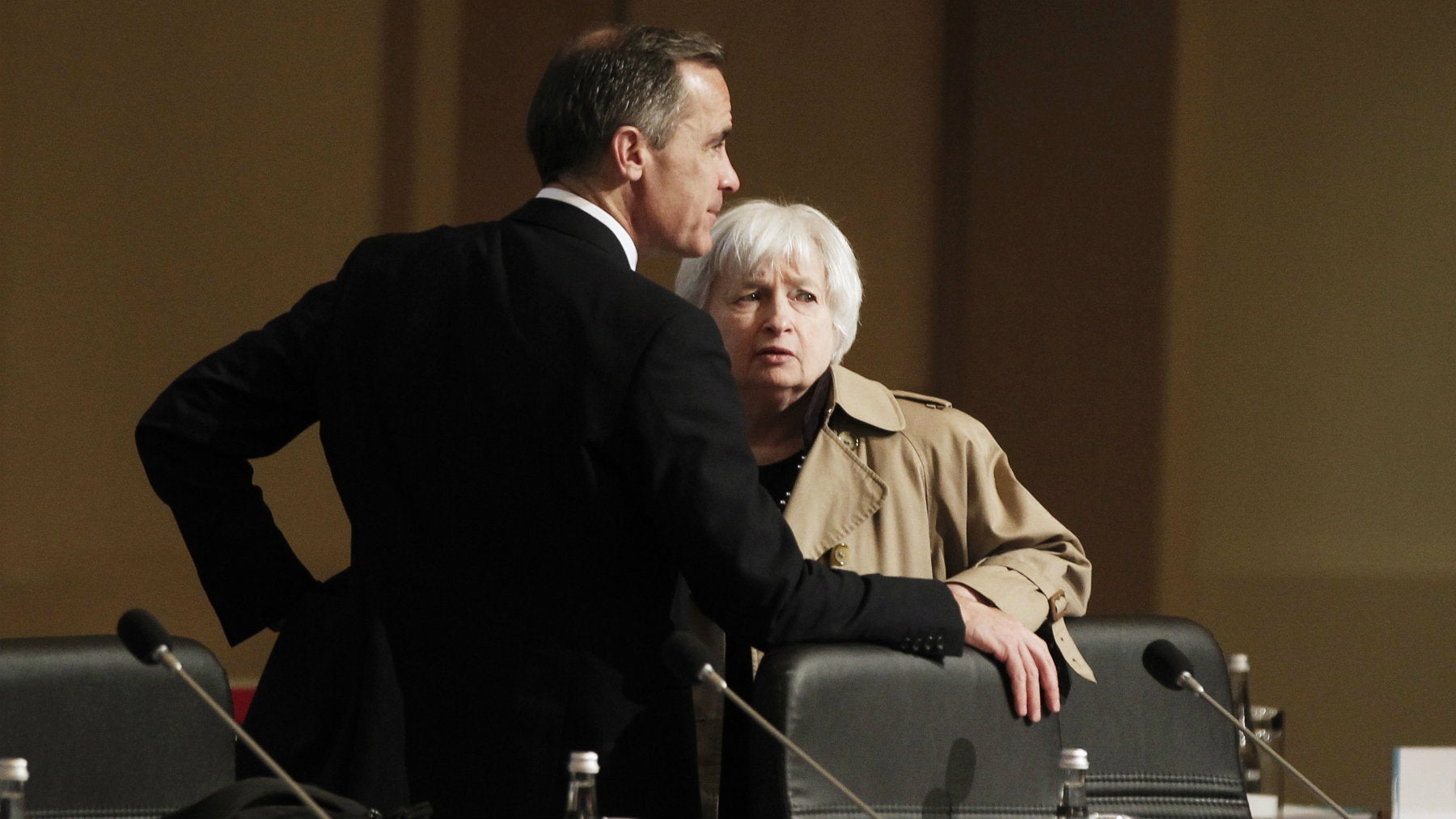The Bank of England might be the world’s most captivated Fed watcher right now
There’s a game of monetary chicken afoot.


There’s a game of monetary chicken afoot.
Both the US Federal Reserve and the Bank of England are grappling with the question of whether to raise interest rates for the first time in years, and they’re both tantalizingly close to doing so. And although the US economy is much larger and the Fed is much more influential, both central banks hold sway over globally important currencies. Whichever moves first moves into uncharted waters and will serve as an example for the other.
Today’s wage and inflation data out of the UK, along with a proclamation last week, are putting the Fed in line to raise rates sooner.
Excluding bonuses, UK wage growth in September was 2.5% on a year-over-year basis, down from 2.8% in August. The unemployment rate is at a post-crisis low of 5.3%.
“Labour market activity is still looking quite healthy. But the slowdown in wage growth in the latest figures confirmed that an interest rate rise is still some way off,” Capital Economics wrote in a note to clients.
In a move that wrecked the pound last week, the Bank of England kept interest rates at 0.5% and, in the eyes of many central bank watchers, pushed the prospect of those rates rising until sometime next year. Although the BoE said things were relatively rosy on the domestic front, economic disturbances abroad threatened to wash ashore.
That’s a very similar situation to the one facing the Fed, which, despite the growing consensus that it will raise rates in December, hasn’t firmly committed itself to a hike. Wage growth remains one of the big question marks there as well. Things are improving on that front, but not as quickly as they are in the UK (even before its recent slide), or even as quickly as they had just a few months ago:
Luckily, both banks have “low-flation“ on their sides, which is propping up real wage growth. And as long as prices remain stable, neither central bank has to be in much of a rush to do much of anything. But for now, thanks to an absolutely fantastic October jobs report and other data points, the Fed looks readier for action than its counterpart across the pond.